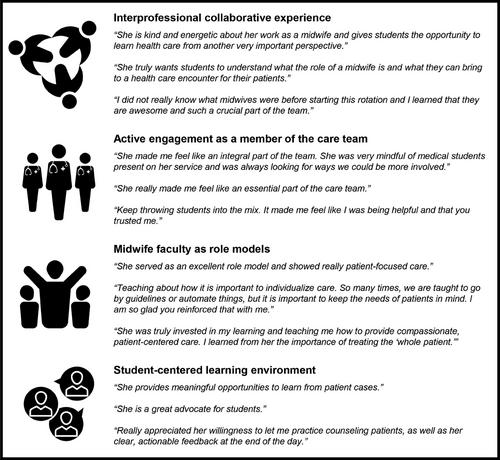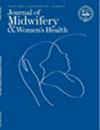Certified Nurse-Midwives as Teachers: Expanding Interprofessional Collaboration Learning Opportunities for Medical Students on the Obstetrics and Gynecology Clerkship
Abstract
Introduction
Interprofessional experiences provide critical exposure to collaborative health care teams, yet medical students often lack this experience during clinical clerkships. We created a labor and delivery triage rotation exclusively staffed by certified nurse-midwives in the obstetrics and gynecology clerkship to address this gap. We sought to evaluate the clinical learning experiences of medical students rotating on this midwife-supervised collaborative team.
Methods
Between 2018 and 2020, we electronically sent all medical students an evaluation after each required clerkship. Our primary outcome was the quality of teaching score, as defined by level of agreement on a 5-point Likert scale with a statement regarding teaching quality. A secondary outcome evaluated scores from the National Board of Medical Examiners (NBME) Obstetrics and Gynecology subject examination taken by all students at the end of the rotation. Evaluations and assessments were compared between students rotating on labor and delivery triage and those who did not. Evaluation comments from students rotating on labor and delivery triage were collated to identify common themes.
Results
Of 374 students, 370 (98.9%) completed the end-of-clerkship course evaluation and 312 (83.4%) completed teaching evaluations. Sixty-seven students (17.9%) rotated in labor and delivery triage; of these, 52 (77.6%) completed both the course and triage rotation evaluations. There were no differences in the mean quality of teaching scores (3.9 ± 1.2 versus 3.8 ± 1.2, p = 0.54) or in NBME Obstetrics and Gynecology subject examination scores between students rotating in labor and delivery triage compared to all other rotations (79.9% ± 7.2% vs 80.2% ± 7.8%, P = 0.436). Comments from teaching evaluations highlighted student exposure to the midwifery philosophy of care model.
Discussion
This work demonstrates the feasibility and benefits of this midwife-led authentic interprofessional collaborative experience for medical students. This model can serve as an example of how to implement and evaluate interprofessional collaboration experiences in the clinical setting.


 求助内容:
求助内容: 应助结果提醒方式:
应助结果提醒方式:


